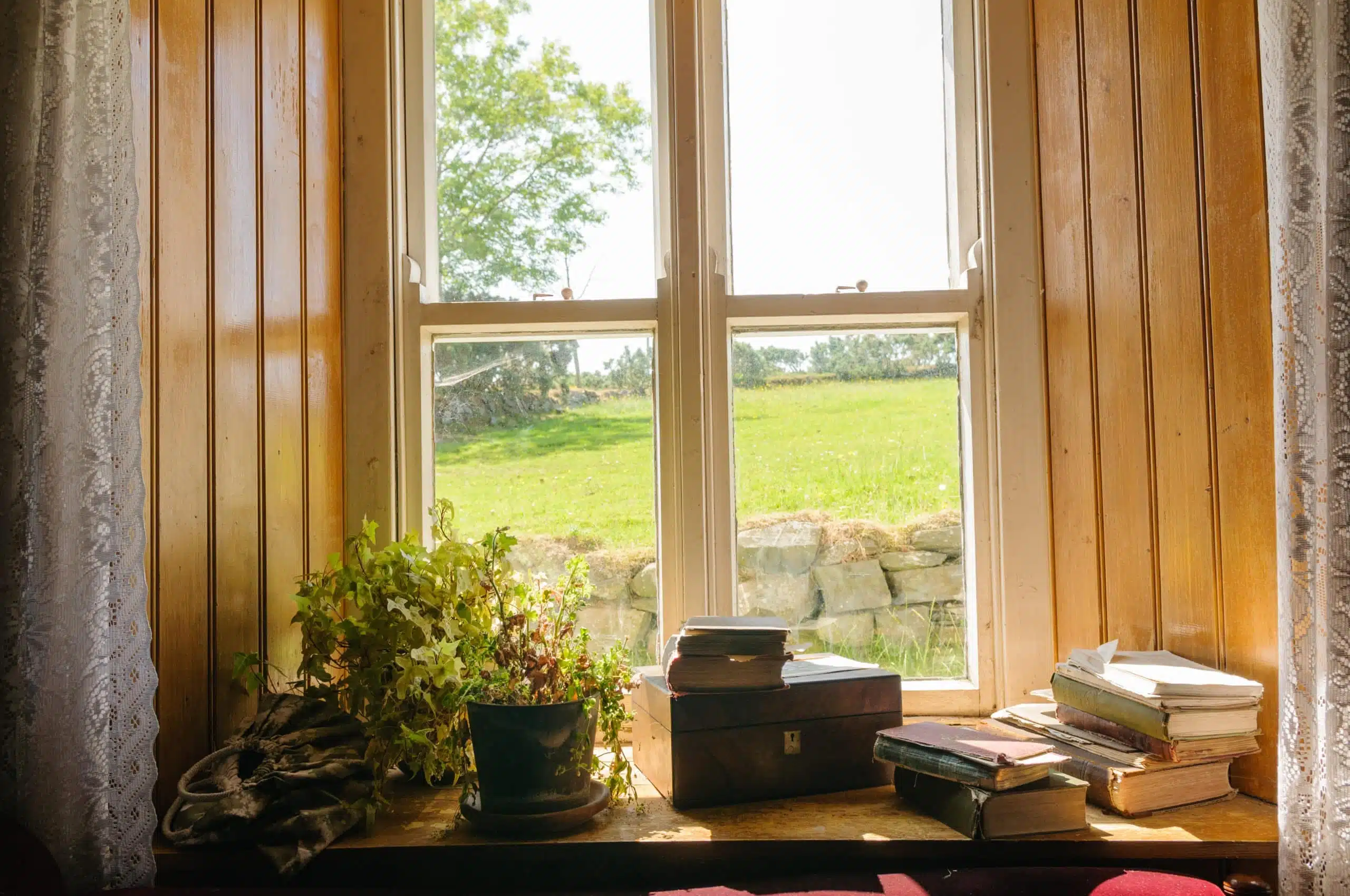Here’s what the Ae Fraeslighe poetry form is:
The ae fraeslighe is an Irish form that utilizes rhymed quatrains with seven-syllable lines.
The form was purposely designed to be easy to remember, owing to the heritage of Irish poetry as an oral tradition.
An ae fraeslighe can be any number of quatrains, allowing the length to fit a range of topics.
So if you want to learn all about the Ae Fraeslighe poetry type, then you’ve come to the right place.
Let’s jump right into it!
- Séadna Poetry Form: Shape Grandeur in Words
- Rionnaird Poetry Form: Express Intense Emotions
- Deachnadh Mor Poetry Form: Infuse Light in Lines
- Deachnadh Cummaisc Poetry Form: Open Minds Wide
- Cro Cumaisc Etir Casbairdni Ocus Lethrannaigecht Poetry Form
- Droighneach Poetry Form: Test Your Poetic Skills
- Breccbairdne Poetry Form: Express Authenticity

Forms of Poetry: Ae Fraeslighe

The ae fraeslighe is an Irish form of poetry consisting entirely of rhymed quatrains.
It was originally designed for oral traditions and features many of the hallmarks of early poetic design, such as an emphasis on rhyme and rhythm.
While Irish forms do not come up often in conversation, the country has a rich heritage of poetry and many of its forms were invented before written language was popular in the region.
Irish poems routinely deal with topics such as nature and beauty, but this is more a trend of the culture than a defining feature of the specific form.
Basic Properties of Ae Fraeslighe Poems

| Rhyme Structure | Yes; multisyllabic rhymes featured |
| Meter | No |
| Origin | Irish oral traditions |
| Popularity | One of the most common forms of Irish verse, but not utilized frequently in mainstream English poetry |
| Theme | Varies |
How Is the Ae Fraeslighe Structured?

The ae fraislighe consists of quatrains in which each line contains seven syllables.
The internal rhyme scheme of each quatrain is ABAB, and the final line, word, or syllable of the entire poem will be the same as the first.
In Irish poetry this technique is called dunadh.
Using a syllable for this is generally preferred.
The rhyme sound on the 1st and 3rd lines (denoted as A above) will utilize 3 syllables, while the rhyme sound on the 2nd and 4th lines (denoted as B above) will utilize 2 syllables.
English forms don’t usually have such properties, so the concept may initially feel foreign to the writer, especially since full-word rhymes are rare in English.
Due to the difficulty of finding full-word rhymes, it’s not uncommon to see English poets approach this standard with a certain degree of leniency.
One common way to pay homage to the intended structure is to at least end on three-syllable and two-syllable words, even if the poet is unable to commit to full-word rhymes.
Near rhymes are also generally acceptable.

Ideally each line of an ae fraeslighe will feature an example of alliteration but English poets often disregard this as an optional rule or a suggested feature.
Despite requiring a specific number of syllables, the ae fraeslighe does not need to conform to a specific meter.
A unique property of the ae fraeslighe compared to many common poetic forms is that the poem has no predefined length of its own.
A poem can be as short as one stanza but can be of any length as long as all stanzas of the poem follow the rules of the form.
Example of an Ae Fraeslighe Poem

As I walk on hilltops grand,
the sky breathes a good deep blue.
Nearby this place, still cropped land
whispers softly this neat view.
I pause, here on the hill’s peak,
transfixed even as I talk.
If only to hear hills speak,
blessing my ears as I walk.
In the above example of an ae fraeslighe, the rhymes are italicized while the intended dunadh is in bold.
Take note that some slant rhyme is employed, such as using “deep” and “neat” as the first syllables of the rhymes on the second and fourth lines.
Nonetheless, there is a clear intent to rhyme phrases rather than just the last syllable.
The dunadh is a three-syllable phrase, in this case, beginning and ending the poem.
It should be remembered that this is a sort of framing device and is considered one of the defining features of the form. Some variant of the dunadh should always be present.
Tips for Writing an Ae Freslighe

It should initially be noted that Irish poetry has an obsession with sound. You will see references to assonance, consonance, and dunadh in every definition of Irish poetry.
However, I should clarify that only the syllable counts, stanza lengths, and rhyme schemes of the Irish forms can truly be taken at face value.
Due to the nature of oral tradition, the exact point at which an Irish form ‘breaks’ and is no longer recognizable as the intended form is vague at best.
Define what elements of the ae freislighe you are and are not comfortable with before even starting.
The rhyme scheme, number of syllables, and the presence of a dunadh should be treated as mandatory features without exception.
Getting used to each of these properties individually will help if you have the time to do so.
Seven-syllable lines, in particular, can be awkward for English writers. You’ll need to get used to using words with a mix of odd and even number syllables regularly since this balance will usually be the key to closing out a line.
Words that are easily inserted into multiple situations are especially valuable.
Adverbs and adjectives tend to fit this description well since you can always add a one-word modifier for another word to hit the intended syllable count.
You’ll need to get used to the idea that each line is one very crisp image or thought.

Seven syllables go by faster than you would think, so there isn’t room for profound complexity on each individual line.
As for the rhyme scheme, determine early on whether or not true multisyllabic rhyme is going to be a consistent option for you.
You should not have to compromise on the quality of the poem just to make it happen.
Give yourself permission to use slant rhymes that English poetry would usually consider “lazy” liberally but try to be strict with the last syllable of each line.
As an example, “memory” and “family” only really feature a slant rhyme on the first syllable, no rhyme on the second syllable, and a true rhyme on the third syllable, but that’s still good enough for an English attempt at a trisyllabic rhyme.
By comparison, “vanity” and “sanity” feature true rhyme more prominently, but the effect isn’t so impressive as to warrant butchering your lines to achieve it.
Always keep in mind that you are writing toward the dunadh.
Simply writing the first line of your poem determines what your options are for how to end the poem, so you need to be thinking about how you’re going to be cycling back around from the moment you start writing.
Poet’s Note

Rhyming multiple syllables in a row is hard but the lack of meter leaves enough wiggle room to make it work.
Don’t go into an ae fraeslighe thinking it’ll be a cakewalk, though.
There’s a reason you don’t see it employed often in English, despite Ireland’s close proximity to England.
Comprehensive Collection of Poetry Forms: Craft Words Into Art

Dare to traverse the entire spectrum of poetic forms, from the commonplace to the extraordinary?
Venture from the quintessential Sonnet to the elusive Mistress Bradstreet stanza, right through to the daunting complexity of Cro Cumaisc Etir Casbairdni Ocus Lethrannaigecht.
For those with a zeal to encounter the full breadth of poetry’s forms, this invitation is yours.
Start exploring the vast universe of poetic ingenuity with our comprehensive array of poetry forms right now!
- Séadna Poetry Form: Shape Grandeur in Words
- Rionnaird Poetry Form: Express Intense Emotions
- Deachnadh Mor Poetry Form: Infuse Light in Lines
- Deachnadh Cummaisc Poetry Form: Open Minds Wide
- Cro Cumaisc Etir Casbairdni Ocus Lethrannaigecht Poetry Form
- Droighneach Poetry Form: Test Your Poetic Skills
- Breccbairdne Poetry Form: Express Authenticity
